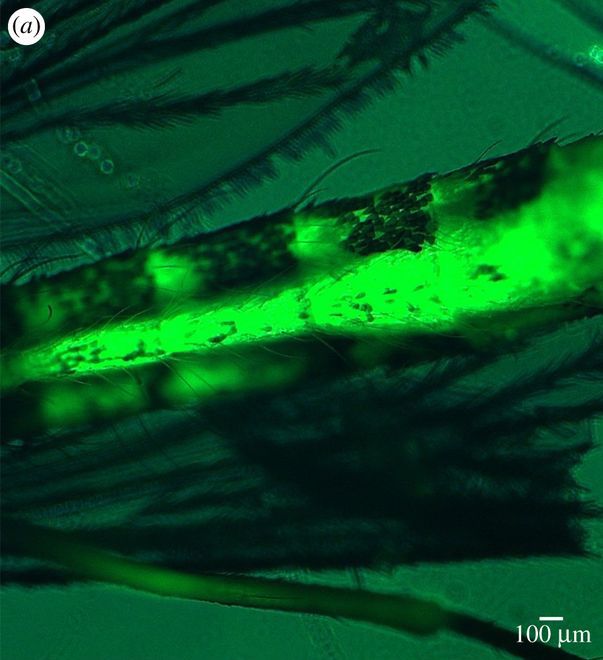Image:
Mosquitoes exposed to tiny bits of plastic in their larval phase can pass that poison on to animals higher up in the food web, according to a study published Wednesday in Biology Letters.Led by University of Reading PhD researcher Rana Al-Jaibachi, the study found that microplastics (MPs) ingested by mosquito larvae remain in their systems for their entire life cycle, which lasts about one week.“Our results have important implications because any aquatic life stage that is able to consume MPs and transfer them to their terrestrial life stage is a potential vector of MPs onto novel aerial and terrestrial habitats,”Al-Jaibachi’s team concluded.The team reached this finding by introducing fluorescent green polystyrene microbeads into beakers containing larvae of Culex pipiens, a mosquito species that is common around the world. One set of beads measured two microns in diameter, while another measured 15 microns (for reference, a strand of human hair is typically about 80 to 100 microns in width). Some larvae were exposed to only one size of bead, while some were exposed to both.The larvae were nourished with guinea pig pellets, and individuals were removed from the beaker and frozen at various life stages, up to and including the adult phase. Al-Jaibachi and her colleagues then studied the frosted mosquitoes under a microscope and counted the number of fluorescent beads that had remained in their systems throughout their life cycle.They found that the larvae were especially prone to accumulating smaller microbeads in their systems throughout their development. Interestingly, those exposed only to the large beads did not seem to be affected at all, while those that had been exposed to the two bead sizes had both small and large beads in their systems as adults. Given that 35 million tons of plastic pollution is dumped into land and sea habitats each year, much of which gets ground down into micron-scale beads like those in the study, the bodies of wild mosquitoes larvae may well be juiced up with plastics by the time they start buzzing around and feeding on blood. These insects’ predators in the wild include birds, fish, lizards, and dragonflies, many of which are already vulnerable to hazards from discarded plastics.
Given that 35 million tons of plastic pollution is dumped into land and sea habitats each year, much of which gets ground down into micron-scale beads like those in the study, the bodies of wild mosquitoes larvae may well be juiced up with plastics by the time they start buzzing around and feeding on blood. These insects’ predators in the wild include birds, fish, lizards, and dragonflies, many of which are already vulnerable to hazards from discarded plastics.
Advertisement

Advertisement
What’s more, Al-Jaibachi’s team suggests that if mosquitoes can carry around plastic beads from their larval phase, so can other insects.“Where many insects are emerging from a highly contaminated site, the possibility of contamination of these predators could be high,” the team noted. “While mosquitoes were used here as a model organism, any freshwater insect that can ingest MPs will likely equally transmit plastics into a terrestrial adult stage.”Mosquitoes have already earned a reputation as the deadliest animals on the planet because they are such efficient vectors for diseases like malaria, dengue fever, and encephalitis. Now it turns out that infectious bacteria isn’t the only dangerous baggage that these annoying bugs might be carrying around, providing yet another reason to regulate plastic production, consumption, and waste management.Get six of our favorite Motherboard stories every day by signing up for our newsletter.Read More: How We'll Solve Our Plastic Problem
